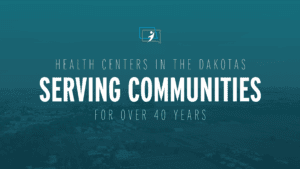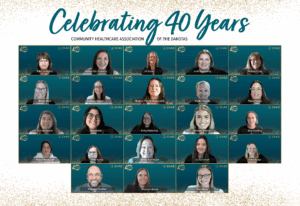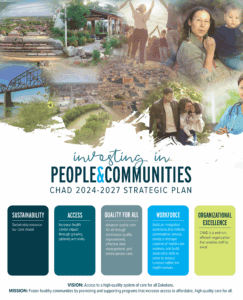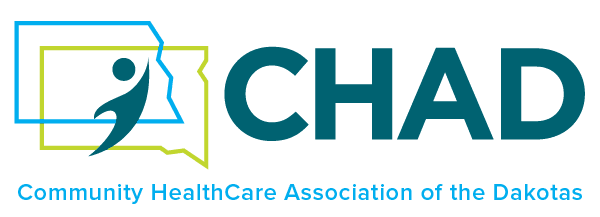Written by Shelly Ten Napel, Chief Executive Officer

This year marks a significant milestone for CHAD—our 40th anniversary as the Primary Care Association serving health centers across North Dakota and South Dakota. Since 1985, CHAD has worked hand-in-hand with health centers to ensure that every community, no matter how rural or urban, has access to affordable, high-quality, and reliable health care.
To celebrate this anniversary, CHAD staff gathered for two days of reflection, collaboration, and community. The first day began with a look back at CHAD’s history through photos, logos, and stories that have shaped our journey. A panel of past and long-serving staff shared their perspectives, offering valuable insights into how CHAD has evolved while staying true to its mission.

One of the highlights for me in building the agenda for our 40th anniversary celebration was the chance to spend some time with CHAD’s founding director, Scot Graff. We recorded stories from the early years, such as his reflection that – before CHAD was founded – he was working alone in a health center with no idea that he had colleagues across the state. Today, we have a strong network of community health centers and Tribal and Urban Indian health centers that have multiple collaborations, such as a shared data network, a shared recruitment platform, and active learning/networking teams across multiple domains such as clinical quality, behavioral health, human resources, communications and more. If you’re interested in shaping strategy and sharing best practices, consider joining one of CHAD’s network teams to collaborate with peers and strengthen health center impact. Contact darci@communityhealthcare.net to get involved.
I also loved learning more about how many of our South Dakota rural sites got started through a Rural Health Initiative in the late seventies that was designed to strengthen and preserve access to care in rural communities. Through the Rural Health Initiative, multiple local community-based boards and foundations were established to lead community health centers, and the role of the mid-level was strengthened, even using medics who had served in Vietnam. As we consider the Rural Health Transformation Fund this year, I have been reflecting on how we can build lasting infrastructure, relationships, and leverage new ideas in ways that will protect rural access to care for years to come, similar to the Rural Health Initiative that jump-started our work over 40 years ago.
Scot also shared the early history of several of our more urban sites, where partnerships between university medical programs led to the establishment of community health centers that also served as residency training sites in Sioux Falls, Rapid City, and Fargo. Only the Sioux Falls health center continues as a residency training site, but workforce development continues as a top tier priority for health centers who still struggle to recruit workforce into areas with health professional shortages. Today, health centers are actively engaged across the “workforce pipeline” from hosting middle school scrubs camps, to partnering with high school HOSA (Health Occupations Students of America), to hosting a range of student training programs including nursing, hygiene, physicians, medical and dental apprenticeships and more, to collectively investing in on-the-job training and upskilling for existing staff. In fact, CHAD is hosting LeadU trainings to support new and existing supervisors and managers on September 3 in Rapid City, South Dakota, and October 1 in Jamestown, North Dakota.
As we celebrate 40 years of service, CHAD is also focused on the future. Check out our 3-year strategic plan to see how we plan to build toward sustainability, access to care, improved quality, workforce investment, and organizational excellence.
Together with our member health centers, we are committed to advancing innovation, fostering collaboration, and addressing the ever-changing needs of the communities we serve. The challenges ahead are significant—but so are the opportunities to build healthier, stronger communities across the Dakotas.
Our past has given us a strong foundation. Our future will be defined by our shared commitment to ensuring that everyone—regardless of where they live or their circumstances—has access to the care they need and deserve.

